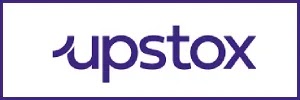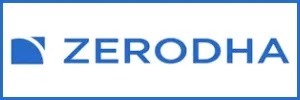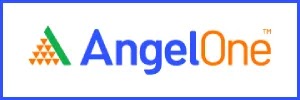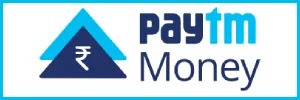| Rs.50.00 Billion Non-Convertible Debentures | CRISIL A/Negative (Downgraded from ‘CRISIL A+/Stable’) |
| Rs.116.56 Billion Term Loans* | CRISIL A/Negative (Downgraded from ‘CRISIL A+/Stable’) |
| Rs.4.04 Billion Overdraft Facility | CRISIL A/Negative (Downgraded from ‘CRISIL A+/Stable’) |
| Rs.17.64 Billion Short-Term Loan | CRISIL A2+ (Downgraded from ‘CRISIL A1’) |
| Rs.6.77 Billion Bank Guarantees | CRISIL A2+ (Downgraded from ‘CRISIL A1’) |
| Rs.12.29 Billion Letter of Credit | CRISIL A2+ (Downgraded from ‘CRISIL A1’) |
| Rs.30.00 Billion Short-Term Debt | CRISIL A2+ (Downgraded from ‘CRISIL A1’) |
CRISIL has downgraded its ratings on the debt programmes and bank facilities of DLF Ltd (DLF) to ‘CRISIL A/Negative/CRISIL A2+’ from ‘CRISIL A+/Stable/CRISIL A1’. The downgrade has been driven by CRISIL’s belief that DLF’s debt levels will remain high and that the weak business environment will result in moderate operating cash flows, leading to weak debt protection metrics.
DLF’s debt levels will remain higher than CRISIL’s earlier expectations because of delay in divestment of non-core assets. CRISIL had earlier expected DLF’s debt levels to decline; supported by divestments of non-core assets of Rs.25 billion in 2011-12 (refers to financial year, April 1 to March 31). However, in the six months ended September 30, 2011, the company achieved divestments of only around Rs.4 billion; its reported gross debt levels have also gone up to Rs.255 billion as on the same date, from Rs.240 billion as on March 31, 2011. Furthermore, the weak business environment will continue to dampen the outlook for the real estate sector in the near term. This, coupled with the high debt levels, is expected to lead to the company’s weak debt protection metrics.
The ratings reflect DLF’s healthy business risk profile and financial flexibility. These rating strengths are partially offset by the company’s high debt levels resulting in weak debt protection metrics, and susceptibility to risks and cyclicality inherent in the real estate sector.
For arriving at its ratings, CRISIL has combined the business and financial risk profiles of DLF and its subsidiaries, joint ventures, and associates, because of their strong operational linkages. In March 2010, DLF completed integration of its promoter-owned entity, Caraf Builders and Constructions Pvt Ltd (Caraf; the holding company for DLF Assets Ltd [DAL]), with DLF Cyber City Developers Ltd. The integration was done to consolidate all rental businesses under one entity.
DLF’s business risk profile is marked by strong market position, low-cost land bank, and economies of scale. DLF’s strong market position is reflected in its established track record in real estate projects across segments and regions in India. The company has so far sold around 50 million square feet (sq ft) of residential and commercial properties, and also has a total leased asset portfolio of around 25 million sq ft. DLF has the most extensive track record of real estate development amongst any private developer in India. The company’s market position is also underpinned by it large low-cost land bank of around 359 million sq ft in prime locations, which supports the profitability of its projects, providing it with a significant competitive advantage over other real estate developers. After the amalgamation of Caraf in March 2010, DLF’s lease rental income increased to Rs.7.57 billion for the six months ended September 30, 2011 from Rs.12.81 billion in 2010-11 and Rs.7.25 billion in 2009-10. The increasing lease income lends stability to the otherwise cyclical business that DLF operates in. CRISIL believes that DLF’s lease rental income will gradually increase over the medium term, driven by incremental leases in DAL’s properties, and renewal of existing leases at relatively higher rates.
CRISIL also believes that DLF enjoys healthy financial flexibility, with a track record of raising funds from national and international investors. The company also has a policy of maintaining liquidity at any given point in time to adequately support the repayment of its debt and interest due for the next six months; DLF had cash and bank balances of Rs.11.8 billion and liquid investments of Rs.5.8 billion as on September 30, 2011.
DLF has very high debt levels, which increased to around Rs.255 billion as on September 30, 2011, from 240 billion as on March 31, 2011. The increase in borrowings is a result of slower new project launches, investment in strategic land acquisition, and delay in recovery from non-core asset divestments. CRISIL believes that DLF’s debt levels will remain high for its rating category over the medium term because of the slow pace of divestments. DLF has unlocked Rs.35 billion from divestment of non-core assets over the past two and a half years and has identified a portfolio of non-core assets aggregating to Rs.60-70 billion, for divestment over the medium term. The company’s ability to unlock value from non-core assets and consequently reduce its debt levels remains a key rating sensitivity factor. Reduction in debt levels will strengthen the debt protection metrics and consequently improve its overall financial risk profile.
The other risk factors include cyclicality in the real estate sector in India, marked by volatile prices, and a highly fragmented market structure.
Outlook: Negative
CRISIL believes that DLF’s operating cash flows will moderate because of the weak business environment, which along with high debt levels, is likely to further weaken DLF’s debt protection metrics over the medium term. The ratings may be further downgraded in case of slower-than-expected movement in DLF’s divestments of non-core assets and consequent delay in debt reduction, or if there is a sharp decline in the company’s revenues and profitability, triggered by slackened saleability of its projects. Conversely, the outlook may be revised to ‘Stable’ in case of an increase in DLF’s operating cash flows, or a significant improvement in its capital structure.
About the Company
DLF, along with its subsidiaries, is one of the oldest and largest real estate companies in India. The company has a diverse asset portfolio, across real estate segments, and is expanding its presence across India.
For 2010-11, DLF reported a net profit of Rs.16.40 billion on sales of Rs.95.61 billion, against a net profit of Rs.17.20 billion on sales of Rs.74.23 billion for 2009-10. For the six months ended September 30, 2011, the company reported a net profit of Rs.7.43 billion on net sales of Rs.49.78 billion, against a net profit of Rs.8.34 billion on net sales of Rs.43.98 billion for the corresponding period of the previous year.
Source: CRISIL Limited









